A Curation of Generational Vibes: Neven Allgeier Portrays Gen Z
In an investigative rather than simply trendy photographic series, Neven (Millennial, German) invites young people to show who they are. On coming of age and apocalypses.
I have often criticized exhibitions for attempting Instagramability without providing anything beyond internet-friendly aesthetics. That’s even trickier when portraying a generation that grew up with social media. But in his current show at Nassauischer Kunstverein Wiesbaden, Neven delivered genuine self-discoveries through photographic Gen Z portraits.
The first floor of the exhibition space showcases photographs from his publication Fading Temples (2022) while the second floor features works from an upcoming publication in the making. Neven’s atmospheric pics are giving Wolfgang Tillmans (Gen X, German) meets Tobias Zielony (Gen X, German). He alternates between portraits, landscapes, and object close-ups, his so-called Environments. Neven and the Kunstverein’s director Lotte Dinse (Millennial, German) arranged the pictures partly in pairs and groups, inviting connections between neighboring motives.
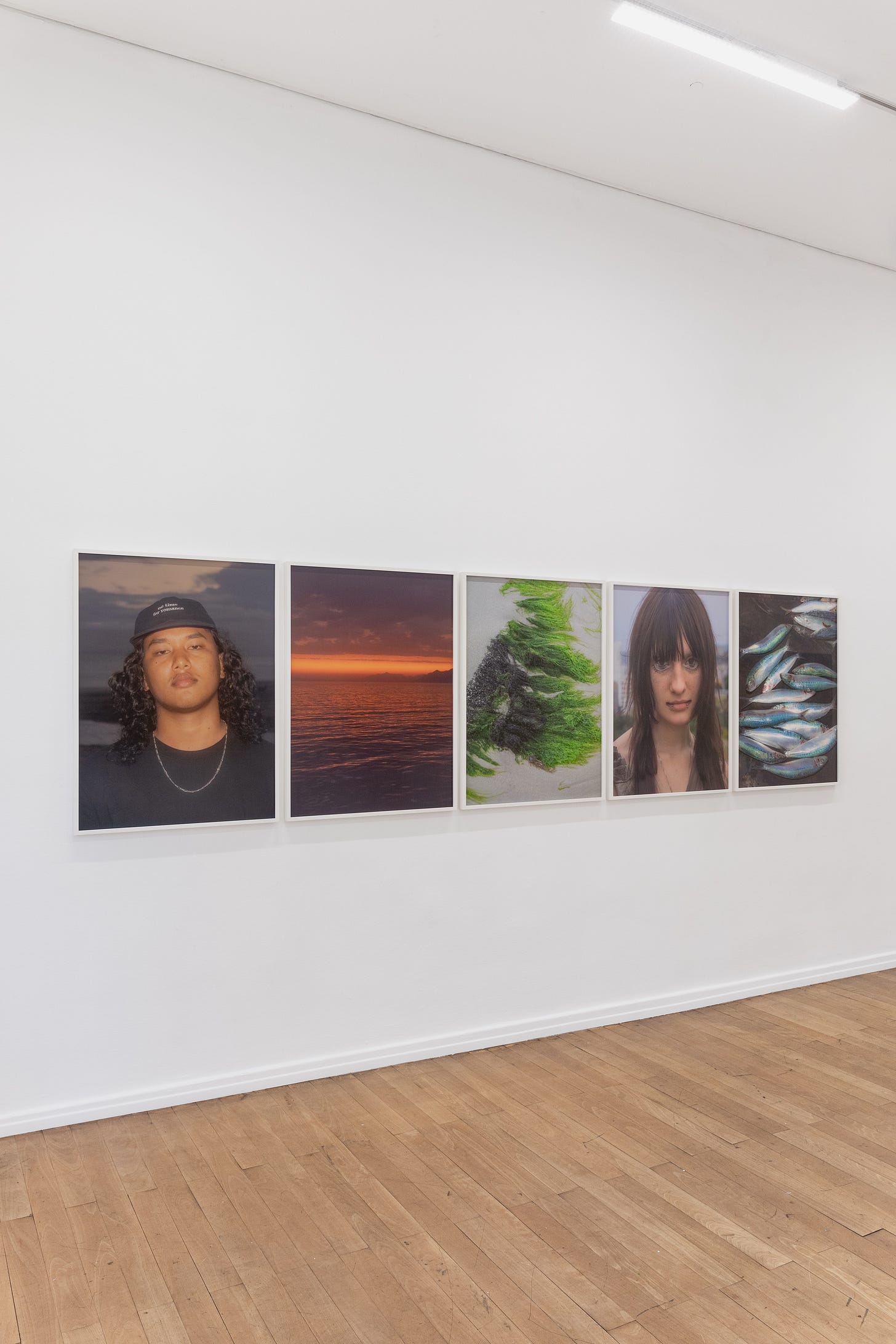
All shots are vertical, although the ratio doesn’t make me think of phone photography, it’s more to fit classic portraiture. Neven finds the people he portrays organically through conversations and recommendations. He gets to know them and gives them space to express themselves. They choose settings, outfits, and how to stylize themselves. Every portrait is named after the person photographed. The arrangement in pairs creates a yin-yan contrast. Is it really yin-yan? Maybe that’s not the right analogy. It’s that the pictures hold up a mirror to each other, reflecting aspects of their counterpart.
The repetition of compositions, textures, and colors in neighboring shots creates rhythm. The slightly diagonal position of Brenda’s (2019) arms mimics the tilted horizon of the landscape next to their portrait. There’s something funny about the suggested connection between shiny fish scales and Sophia’s (2022) eye makeup and glistening lip piercing. And something about another young person’s sharp green-white makeup next to a rough ice block makes me stay with this picture pair longer.
One combination is a pastel-ish rosy blue sky with a high-contrast portrait of Vasya (2022). The high exposure contrasts her black fit and dark background. I’m mesmerized by her face. Her jawline and ears have the same angle, her eyeliner mimics her delicate winged eyebrows. Now that’s a siren if I’ve ever seen one. But not every portrait is as bold. Some people look lost in their thoughts, turning inward. Neven balances out eccentric and more introverted personalities throughout the exhibition.
Veta (2023) is present in two separate shots that look like film stills. Their messy makeup and sleek hair strands suggest that they were caught in the rain although their clothes aren’t wet. It’s hard to tell what’s intentional in these pics and what’s not. Veta’s casually drinking a beer while holding a cigarette with the same hand. The single-handed multitasking ability is a phenomenon worth studying in itself. There’s something sinister about the golden ribbon tied around their neck and the heart-shaped pockets on their baby blue hoodie against their chaotic hair and face. Veta looks like they’ll pull up with a baseball bat and wreck a car at 3 am just because. This is The Joker if it wasn’t Joaquín Phoenix.
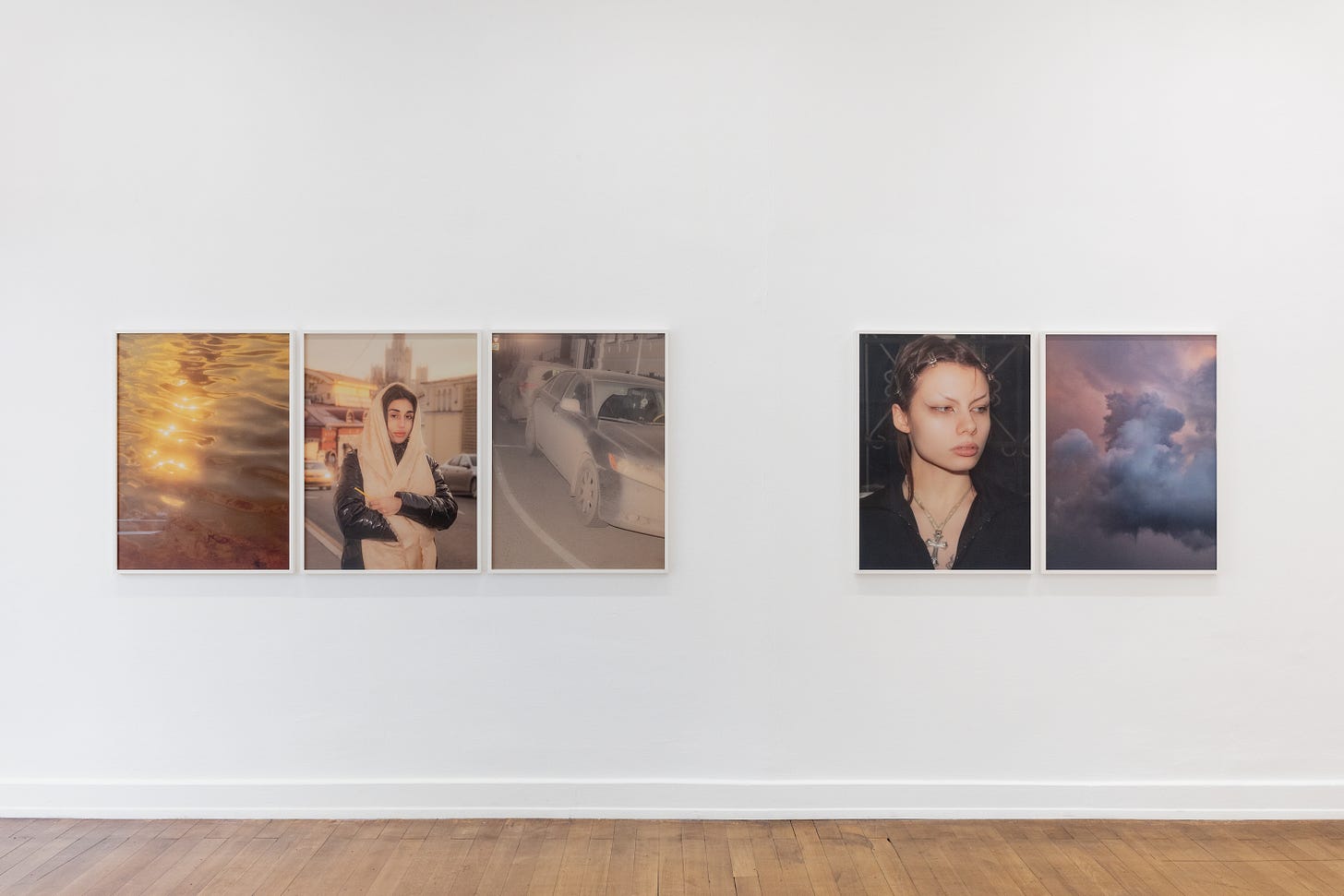
That’s So Me When The-
I don’t know how to go about this review without sitting you down for a historical breakdown of youth culture aesthetics. Here’s a hot take: Gen Z is the first generation that explicitly builds its identity primarily on aesthetics. You are Gen X or Millennial no matter what you do or like or think, but you make yourself Gen Z. Therefore, it’s possible to be a real Gen Z or not Gen Z enough. Sure, young people organized in groups and formed their identities through shared codes, language, or styles in the past as well. Gen Z didn’t invent subcultures. Gen Z rather killed them.
About a year ago, cultural content creator
(Gen Z, US-American) declared the death of subcultures and proclaimed the rise of aesthetics within Gen Z culture. While subcultures used to be tied to local experiences and shared beliefs, virality made Gen Z a global phenomenon encompassing infinite aesthetics and trends. Instead of generational movements, there’s aesthetics you can easily adapt and switch. Mina says: “You could be a white woman from South Carolina and use ballroom lingo just because you watch ‘RuPaul’s Drag Race’, but not because you’re actually part of this subculture.” Consequentially, it’s harder to tell what social, economic, educational, and cultural environment a young person belongs to. Gen Z share everything and nothing at once.By looking alone, it’s hard to tell what time exactly Neven’s shots are from. Some styles could be from the nineties or early 2000s, there’s even an ‘80s vibe in between. They are both dated and timeless. Another aspect of Gen Z identity lies in a paradox: Isolation despite constant media exposure. Every sitter is pictured on their own, beyond a building, landscape, or beach, clues to their environments are limited. Surely, there’s virtually nothing Yuval and Georainbolt couldn’t find out (I’m also pretty sure they’re both Gen Z). And yet, by limiting information on the places where these pictures were shot, Neven creates uniformity. What do all these unique young people have in common?
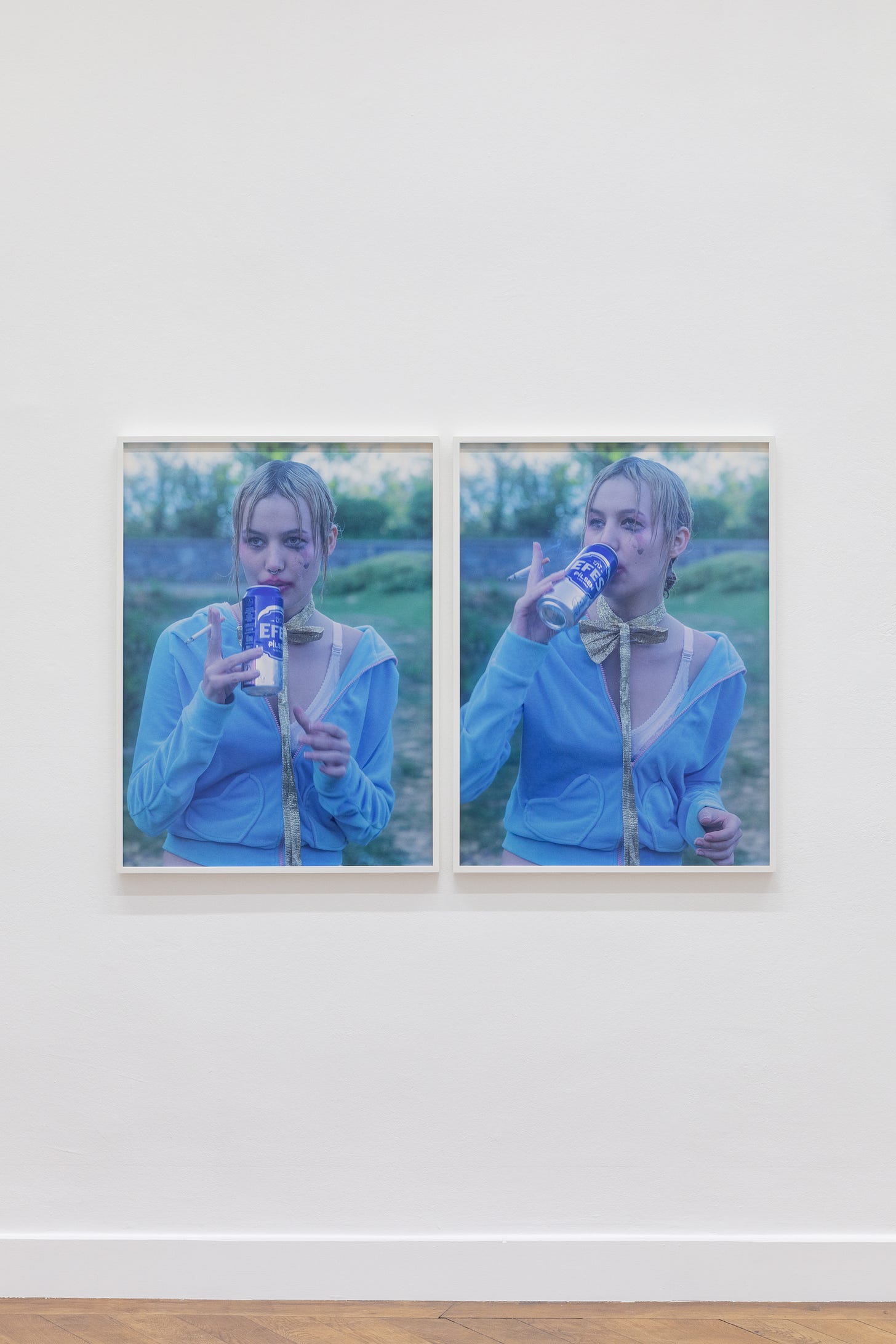
The World Is Burning, The Looks Are Serving
Neven suggests something sinister in his photographs. Brenda’s (2019) blond flowy hair is adorned with ribbons and petals. Although they wear a dreamy pink blouse leaning into a romantic coquette-core look, this person chose dramatic make-up: blue eyeshadow flows over their cheeks with transparent stones imitating accumulated teardrops. Their gaze is steady and serious, but the artificial tears are very much Lana Del Rey. Is sadness only performative? Their eye shadow picks up the palette of the sunset nearby while being surrounded by dark clouds. Is a storm coming? How artificial can these tears be called then, aren’t they much rather symbolic?
Yury (2022) is crouching on a staircase. Although they didn’t come with apple-bottom jeans, they did bring black boots with the fur. Their head rests in their palm, and even though their body language appears shy, their look is calm and direct. Neven and Lotte positioned a photograph of a mall parking lot next to the portrait: A giant globe bathed in sunset light carries the slogan THE WORLD IS YOURS in some Disneyland type fond. I wish it were like that, but it feels like a false promise and a curse. Now that we’ve killed the planet to get the most for our retirement funds, the world is yours. The world is yours (to rescue). The world is yours (to consume between Coke ads and Thai Massage). Thank you for shit…
There’s a reason Gen Z came up with #hopecore. There’s still enough to hold on to optimism. Liana (2019) is bathed in warm beige sunlight. I love how the sun is reflected in a building behind her to her left and how the coloration turns dusty to her right, neatly tying into the motives next to her portrait. To her right, a pic of dust-covered cars. Volcanic ashes? Remnants of a desert storm? To her left, golden light reflected on the delicately moving water surface. There’s a prominent preference for golden hour shots throughout the show. If there’s one thing that Gen Z doesn’t mess around with, it’s the face card and lighting… That’s two things. Anyway.
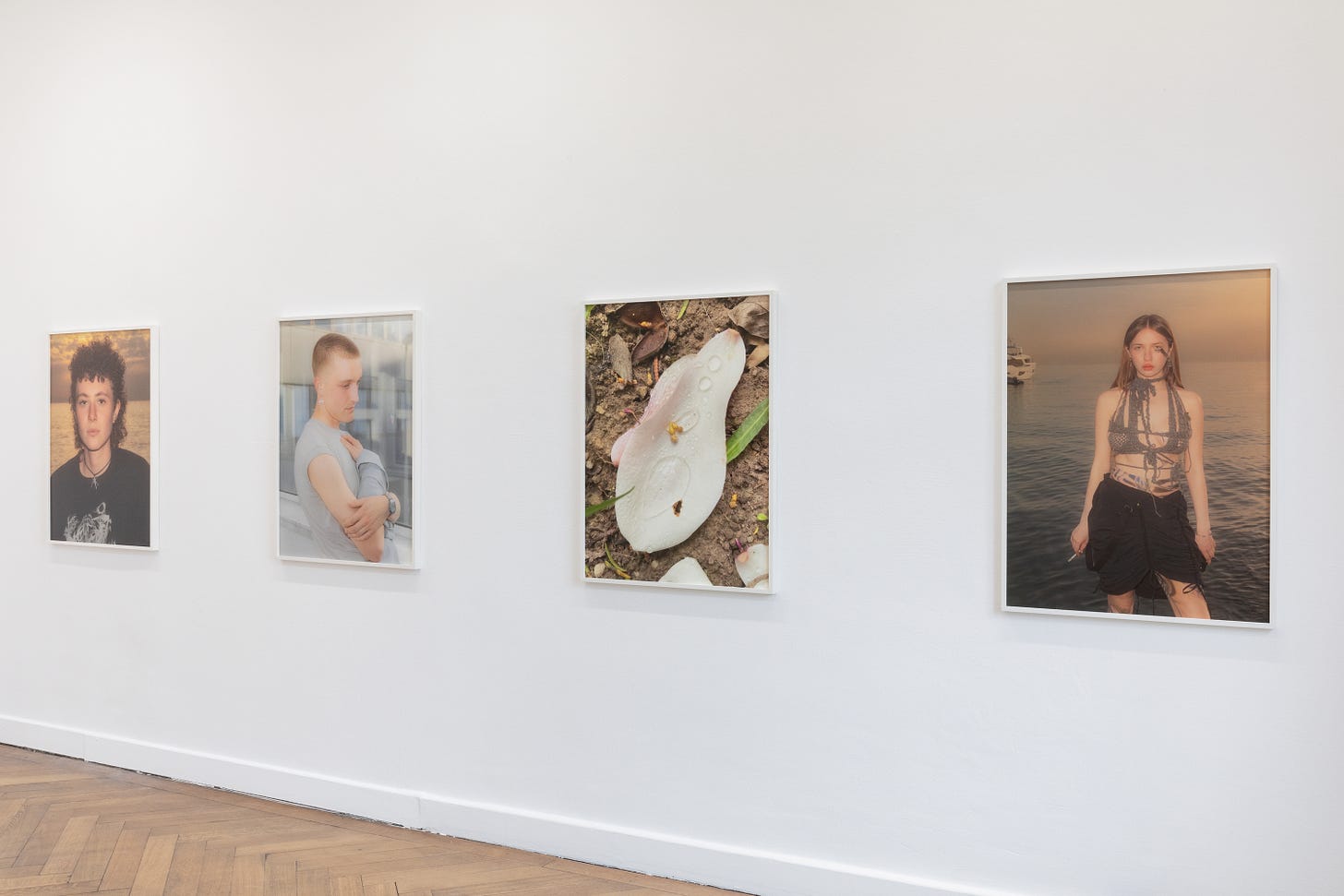
To Be Seen And Understood
Neven plays with scale on the second floor. Emelya’s (2023) and Melih’s (2023) portraits appear much smaller than the enlarged photographs of delicate sprouts growing from the dry, cracked soil next to them. Something beautiful can be created even in the most adverse conditions. There’s another huge Environment piece picturing dry leaves and petals floating in a swimming pool. I’ve seen that one too often, though, dangerously close to Tumblr. In another shot, a thin rainbow gently grazes a butterfly. Look closer. It’s a moth. Look closer. The little creature is dead, its legs facing upward. Walk by and you miss it.
I find it an interesting choice to leave out any identifying labels in the exhibition space, I asked Neven about the names and pronouns to get it right, though. All info comes from the visuals alone. I catch myself making a lot of assumptions about these young people. I assume that many live in the West and that they come from non-precarious backgrounds. Why? Exactly because of their self-fashioning. Working-class aesthetics are coopted by rich kids. Thrifting well might be more expensive than fast fashion. As I stated earlier, there are no more subcultures, only aesthetics to adapt as you please.
But there’s another reason why I catch myself making that assumption. Curating an image of oneself requires time. And the constant need for survival (be it physical or economical) makes time and energy scarce for such introspection. To give you an example of economic survival, I recently saw a snippet of comedian Robin Tran (Millennial, US-American) saying that poor people don’t listen to Radiohead. As a kid, she loved ghetto rap. On her first corporate job, she embraced Radiohead. Basically, you have to get on an existential level to relate to their music. Your income and financial stability are crucial for shaping your taste and interests. She didn’t invent this concept, it’s well documented in social science as “milieu” or social structure.
As an example of physical survival, comedian Emil Wakim (Gen Z, Libanese-US-American) made an appearance on SNL a couple of days ago. He claimed that people living in catastrophe and crisis are by virtue not in a place for broader self-reflection. “You can’t watch your village get blown and be like ‘I think I’m bisexual, actually’”, he said. I know, I’m trying to get philosophical while quoting two entertainers, that’s not how science works. But Emil and Robin kind of make a similar argument: A certain level of introspection and self-reflection — and therefore self-fashioning — requires privilege. I still haven’t figured out how I feel about this take. Crisis brings forth creativity in unimaginable ways. That’s why it’s often the most marginalized communities that shape fashion, art, and pop culture. But it’s still a thought I keep circling over and over again.
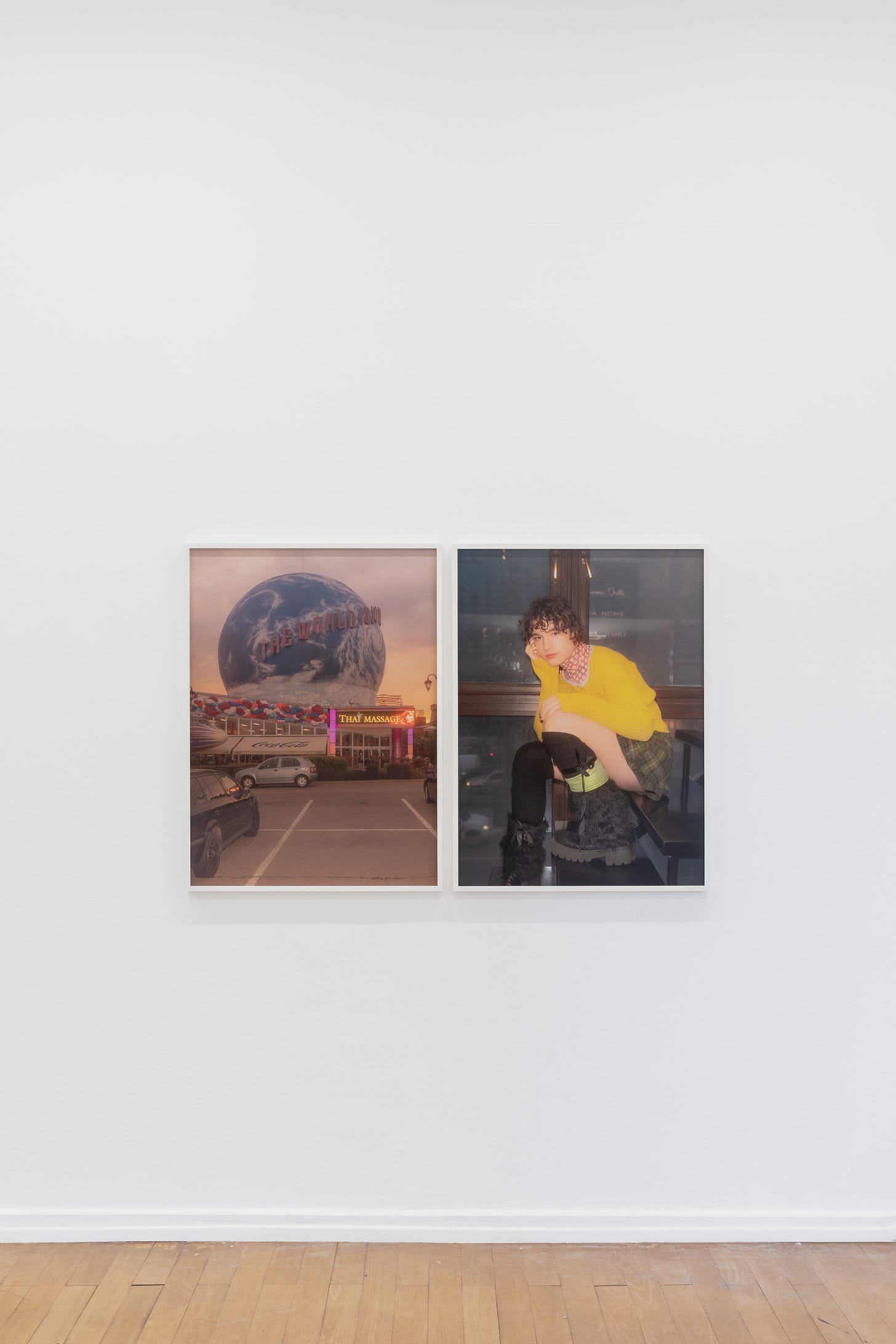
Ironically, while calling myself The Gen Z Art Critic, I was wondering whether I am the right person to assess the representation of my generation. Sometimes, I don’t feel like I’m a “proper” Gen Z and then I wonder what that even means. I’m reminded of how performative being Gen Z is. Am I able to say whether Neven got us right in these shots? And is it even about my generation as a whole that grew up “with the climate crisis, pandemic, war, and social media”, to borrow from the press release, or rather these specific individuals that happen to be part of it? Where’s the line between case studies and general observations? Is there one?
I appreciate Neven’s approach. He’s not looking down on the young people he portrays being like aw, look at those kids pretending to be this or trying to be that. He takes them seriously in their yearning to express and find themselves in a messy world. He allows space for self-fashioning and stylization because identity isn’t fixed. And it wouldn’t be fair to expect young people to develop a consistent sense of self right on the spot.
Yes, there’s something romantic about these shots, something dreamy about the stylization. Romanticism is a bandaid for fear of what might lie ahead. Neven captures generational anxiety subtly. He doesn’t just line up shots of kids in front of burning cars or other explicitly dystopian settings like the world is not in a good place right now, in case you didn’t notice. Neven keeps catastrophe outside of the frame. It’s restricted to a gut feeling, the darkening sky. Makes me think of that Léo Luccioni (Millennial, French) show again: Maybe the sun really doesn’t exist and all those beautiful Instagramable sunsets are just the world burning in front of our eyes?
Neven Allgeier: Drown in Dreams, through November 10, 2024, at Nassauischer Kunstverein Wiesbaden.
Nassauischer Kunstverein Wiesbaden
Wilhelmstrasse 15
65185 Wiesbaden
Website
Instagram: @nevenallgeier @kunstverein.wiesbaden
Did you vibe with this one? Share this review with a friend if you did. As a subscriber, you can also like and comment on my reviews, so hit that button!
See you soon!!!
Jennifer
The Gen Z Art Critic





I found the fish very inspiring; it reminded me of my way home at the weekend—packed in like sardines on the subway!